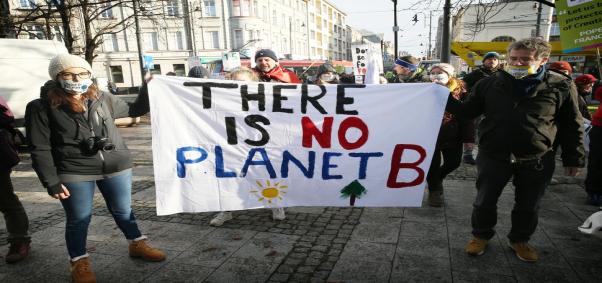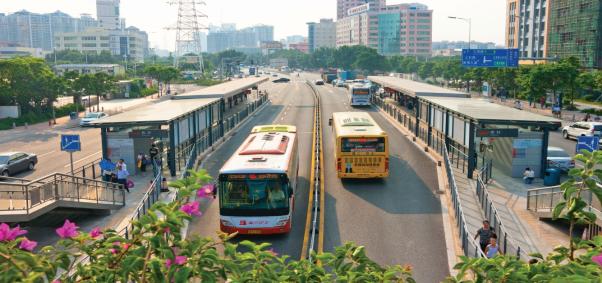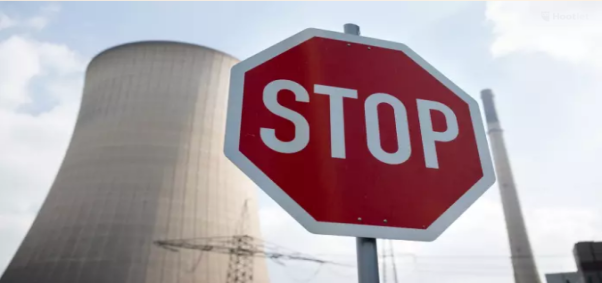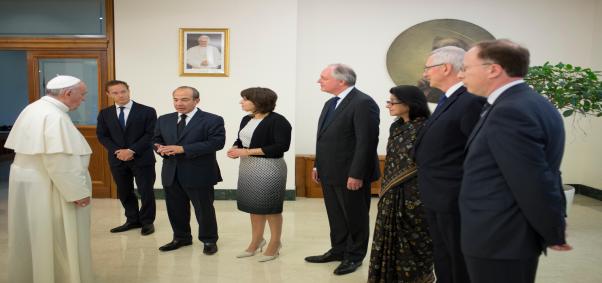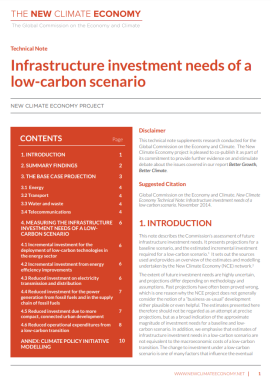
This note describes the Commission’s assessment of future infrastructure investment needs. It presents projections for a baseline scenario, and the estimated incremental investment required for a low-carbon scenario. It sets out the sources used and provides an overview of the estimates and modelling undertaken by the New Climate Economy (NCE) network.
Downloads
460.21 KB
7.34 MB
705.66 KB
![]() Une Meilleure Croissance, Un Meilleur Climate: Executive Summary
Une Meilleure Croissance, Un Meilleur Climate: Executive Summary
725.84 KB
324.68 KB
902.91 KB
859.04 KB
![]() Pertumbuhan Lebih Baik Iklim Lebih Baik: Ringkasan Eksekutif
Pertumbuhan Lebih Baik Iklim Lebih Baik: Ringkasan Eksekutif
7.68 MB
3.64 MB
3.54 MB
1.44 MB
2.8 MB
2.13 MB
3.48 MB
3 MB
10.28 MB
3.31 MB
983.99 KB
5.92 MB
2.24 MB
1.04 MB
8.49 MB
2.04 MB
2.66 MB
111.69 KB
2.55 MB
5.8 MB
4.08 MB
2.04 MB
![]() India: Pathways to sustaining rapid development in a new climate economy
India: Pathways to sustaining rapid development in a new climate economy
570.48 KB
![]() Seeing Is Believing: Creating a New Climate Economy in the United States (Summary)
Seeing Is Believing: Creating a New Climate Economy in the United States (Summary)
3.54 MB
![]() Seeing Is Believing: Creating a New Climate Economy in the United States
Seeing Is Believing: Creating a New Climate Economy in the United States
380.04 KB




